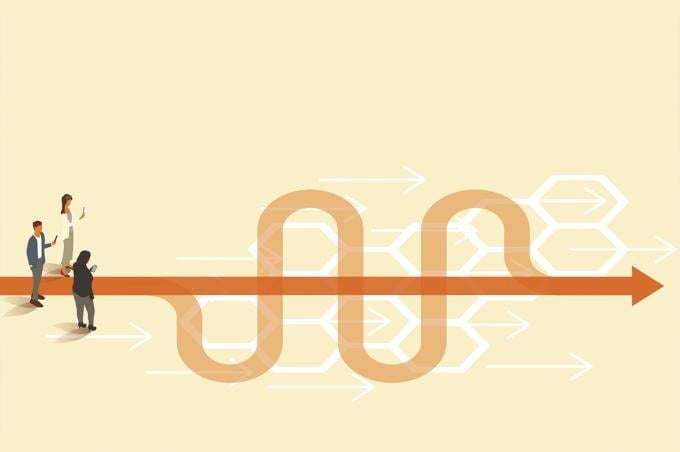Mistreatment and harassment of physicians by patients, families and visitors has risen during COVID-19, as doctors face pushback on pandemic-related measures.
The majority of studies on mistreatment have focused on the culture of medicine, not on poor treatment of physicians from patients, according to AMA member Lotte Dyrbye, MD, senior associate dean of faculty and chief well-being officer at the University of Colorado School of Medicine in Denver.
Dr. Dyrbye and her colleagues hypothesized that there was a link between suboptimal treatment and higher risk for burnout. The results of their study, published in JAMA Network Open™, found that 30% of 6,512 physicians experienced ethnically offensive remarks in the previous year, while 28.7% said they experienced offensive sexist remarks. Fifteen percent of physicians said they’d been physically harmed.
Female physicians and doctors from historically marginalized racial and ethnic groups were especially prone to mistreatment and discrimination. Being harassed or belittled or discriminated against by patients, families and visitors was an independent predictor of higher risk of burnout.
“That really sort of gets into the where do we go from here? How should organizations respond?” Dr. Dyrbye said during an episode of “AMA Moving Medicine.”
The answers go beyond revising patient visitor and conduct policy and procedures. Physicians need support systems to help mitigate the impact of these encounters.
Reducing physician burnout is a critical component of the AMA Recovery Plan for America’s Physicians. You took care of the nation. It’s time for the nation to take care of you. It’s time to rebuild. And the AMA is ready.
Far too many American physicians experience burnout. That's why the AMA develops resources that prioritize well-being and highlight workflow changes so physicians can focus on what matters—patient care.
Mistreatment probably worse now
Researchers for the JAMA Network Open study collected information about six to nine months into the COVID-19 pandemic. “So the data we collected was really before the pandemic,” explained Dr. Dyrbye.
Since then, physicians have been harassed and intimidated by patients and others over masking requirements, vaccines and hospital-and-visitation rules. “If anything, if we were to repeat the study today and ask doctors about their experiences, it's likely to be even more prevalent than it was really a year before the pandemic,” said Dr. Dyrbye.
One in five doctors reported that a patient or family member refused treatment because of their appearance or their personal attributes. This needs prompt attention “so that we can promote an inclusive culture where all clinicians can thrive,” she added.
Read about how COVID-19 has hit physicians hard—some more than others.
De-escalate through gentle correction
Physicians can diffuse situations by guiding the patient in the right direction, advised Dr. Dyrbye.
“That's a really hard thing to do, but I find that sometimes there's misunderstandings that the patients have that can be kind of corrected in the moment,” she said. Listen to the patient’s concerns, empathize, and then try to redirect the conversation through reasoning. Assure the patient that you’re trying to provide the best care for them.
When leaders step in
If the escalation continues, physicians should try to capture direct quotes from the patient or visitor and report it to leadership.
Diversity, equity and inclusion officers or patient experience officers can take appropriate steps to ensure that patient abandonment doesn’t occur, providing options to seek care at different places and facilitate transfer of medical records.
“Or at the very least develop a contract between the patient and the organization so that we can avoid insensitive or intolerant remarks being made toward any member of our staff,” Dr. Dyrbye suggested.
Go inside Mayo Clinic's five-step process for handling biased patients.
Need to support each other
Reducing harassment calls for a coordinated, systemwide strategy among operational and security leaders and people in the occupational workspace. This includes chief diversity and well-being officers and workplace violence leaders.
Patient-visitor conduct policies and procedures should specify what health care workers should do if harassed, and how to ethically terminate care of a patient if harassment occurs. Building a support system for doctors is key.
“I really hope that physicians who have such experiences are seeking peer support or having conversations with colleagues about this experience,” said Dr. Dyrbye.
“AMA Moving Medicine” highlights innovation and the emerging issues that impact physicians and public health today. You can catch every episode by subscribing to the AMA’s YouTube channel or the audio-only podcast version, which also features educational presentations and in-depth discussions.




